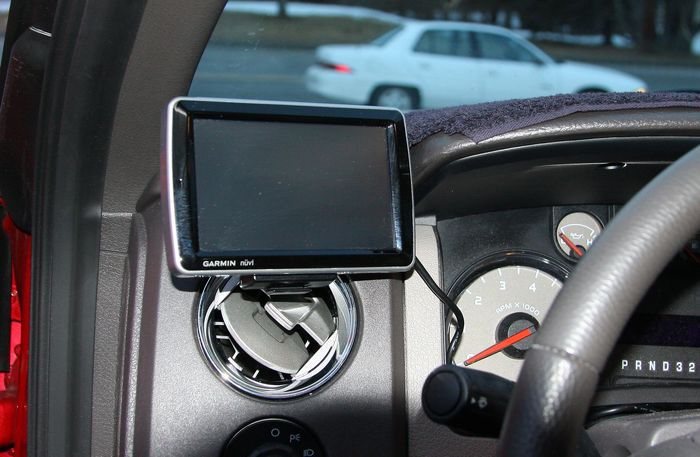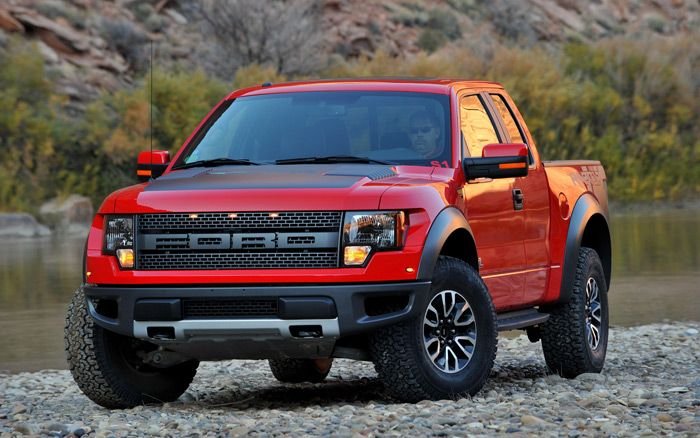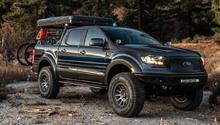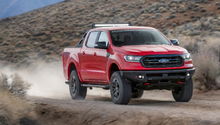Ford F-150/F-250: How to Off-Road
Off-roading is an enjoyable way to see America's backcountry. Your F-150 or Super Duty can take you many places in factory stock condition. Knowing where to look and how to prepare are key to having a safe and enjoyable trip.
This article applies to the Ford F-150 and the F-250, F-350 Super Duty.
Off-roading really refers to driving off pavement. Most of the time you are actually traversing a road when off-roading, which is referred to as running trails (although the U.S. Forest Service classifies trails for foot use). Sometimes you are just driving across terrain. For example, playing in a field or an Off Road Vehicle Recreation park such as sand dunes or cinders is more terrain driving than trail running.
Off-roading requires two things from your vehicle: traction and suspension. Although two wheel drives are capable of off-road travel, four wheel drive allows the ability to put power to all four wheels, thus offering a boost in traction. Notice I said the ability, as most vehicles have open differentials that will default the power to the wheel with the least resistance. This is typically the wheel that is in the air and free of any resistance from the ground. This brings us to the second crucial component: suspension. In order to be able to keep your wheels in contact with the ground, the suspension must have enough wheel travel.
Modifications are a good way to enhance a vehicles' off-road capability. As you traverse more difficult trails, you will become aware of your vehicle’s limitations and potential areas to modify. Tow hooks are definitely an important modification when you go off-roading in case you get stuck. You can also modify your truck to make it a better off-road vehicle by adding a life, axle braces, and off-road tires. By starting with easier trails and working your way up, you will gain the experience and knowledge needed to traverse more difficult terrain. You will also begin to realize the limitations of your vehicle as well as learn the areas that need to be modified.
Today’s vehicles have the ability to traverse a variety of different terrain types. However, it is essential to understand the limitations of your vehicle before hitting the trail. As a driver you have limitations, too. An experienced driver can traverse a trail in a stock vehicle that might stop a beginner in a modified vehicle. This is because an experienced driver understands wheel placement and drives in a manner that keeps the tires in contact with the road.


Four wheeling is available in virtually every part of the world. Planning a trip requires some forethought as the potential to get stranded is always a possibility. Being prepared is the best advice you can get for off-roading. Research the trail in advance to understand the difficulty and any limitations to access. Never go out alone. Always have a second vehicle along with you.
You should also know how to do basic repairs in the event of a breakdown. If you can’t fix it in your driveway, you can’t fix it in the back country.
Like your truck, communications have limitations, too. Cell phones have to be able to link up with a cell tower. There aren’t a lot of towers in the back country. It’s a good idea to leave information with someone regarding your destination and expected time of return. That way you can have someone ready to look for you. Also, be prepared to survive with food, water, and the ability to keep warm. If you do break down, never leave the vehicle as it’s much easier to find than you are.

Basic preparation includes investing in a map, a basic tool kit, a recovery strap, and a GPS unit. You may also want to have some sort of extraction device such as a high lift jack. This handy tool can be used to pull the vehicle or elevate it for stacking rocks to free you from mud, sand, or being hung up on a rock. Make sure you have a lug wrench that fits your lugs. Many times the size changes after modifying the wheels.
(Related Article - Ford F-150: Truck and Supplies Guide - Ford-trucks.com)
Step 1 - Start with easy terrains

Start by traversing easy terrain and/or trails and getting used to your vehicle. Learn how to place your ult terrain. Modify your vehicle accordingly, and avoid hitting the underside of your vehicle.
Step 2 - Transition to more difficult terrains

As you progress, try off-roading in harder terrains gradually.
Pro Tips
- Always tie your equipment down especially a Hi Lift jack. Off-roading jostles the load much more than road driving increasing the chance of flying objects.
- If you can, go off-roading with experienced individuals.
- Join a club or United Four Wheel Drive to learn more about the trails in your area.
- Print maps out prior to departing as you may not always have access to internet in remote areas.
- Never cross fast flowing water. Understand the depth of the water and where your engine intake is before considering water crossings.
Related Discussion and Readings
- Off-Roading - F150forum.com
- Instructions - Artofmanliness.com
- Tips - 4wheelparts.com
- Best Places in USA - jalopnik.com






